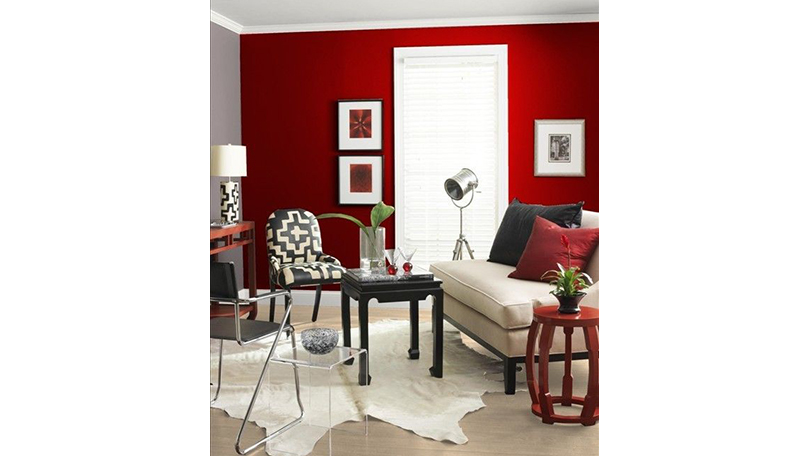Image credit: bhg.com
In a previous article, we provided some advice on how to select paint colors for the exterior of your building. Today, Lamudi Ghana will help you choose colors for the interior of your home.
Paint colors no doubt reflect the mood of occupants of the room. They also have some impact on the energy level. Selecting living room colors should be done cautiously, depending on your personal taste. You can choose either traditional or modern colors. But how can you make sure the colors you have selected are appropriate and what are the consequences on your energy level, intellect and emotions? Read on to find out why:
Red
This is one of the most exciting colors you can choose for your room. It brings enthusiasm and creates a very dynamic first impression. Red can be used for the entire living room, the hallway or the dining room to create a modern and trendy atmosphere. It also provides energy to the occupants of the room. However, be careful not to overuse this color, since too much energy may make you angry or aggressive. If necessary, tone it down with other neutral colors.
Purple
Purple represents sophistication and class. It brings elegance into the living room. Select lighter shades of purple to provide a feeling of peace and tranquility.
Green
Green is a popular color for living rooms, kitchens or bedrooms. It calms occupants and make you feel closer to nature. Green comes in a wide variety of shades – emerald, teal, pale green, lime green – all of them are very relaxing and bring a pleasant and fresh touch to your living room.
Blue
Like green, blue also has a calming effect. Color experts say blue reduces the blood pressure, producing a soothing effect. It is no wonder most people select blue paints for bedrooms and bathrooms – but you can also use it for your living room to make your guests feel relaxed and peaceful.
Orange
Orange, like red, adds excitement and gives energy to the occupants of the room. Gaudy orange could be too much for the living room and may cause restlessness especially among children. It would thus be more appropriate to make orange an accent or mix it with matching colors.
Yellow
Most people think of the sun when yellow is mentioned. It is cheerful, bright and makes everyone happy, so painting a wall in yellow is especially advisable if your living room does not have much natural light. When used in excess, color experts say yellow can cause frustration and anger – use it in moderation.
White or Grey
White and grey can be used for any space to create a neutral atmosphere, and all the more so, if you have colorful furniture. These colors add depth and elegance to a living room.
What are your favorite living room colors? Let us know.


